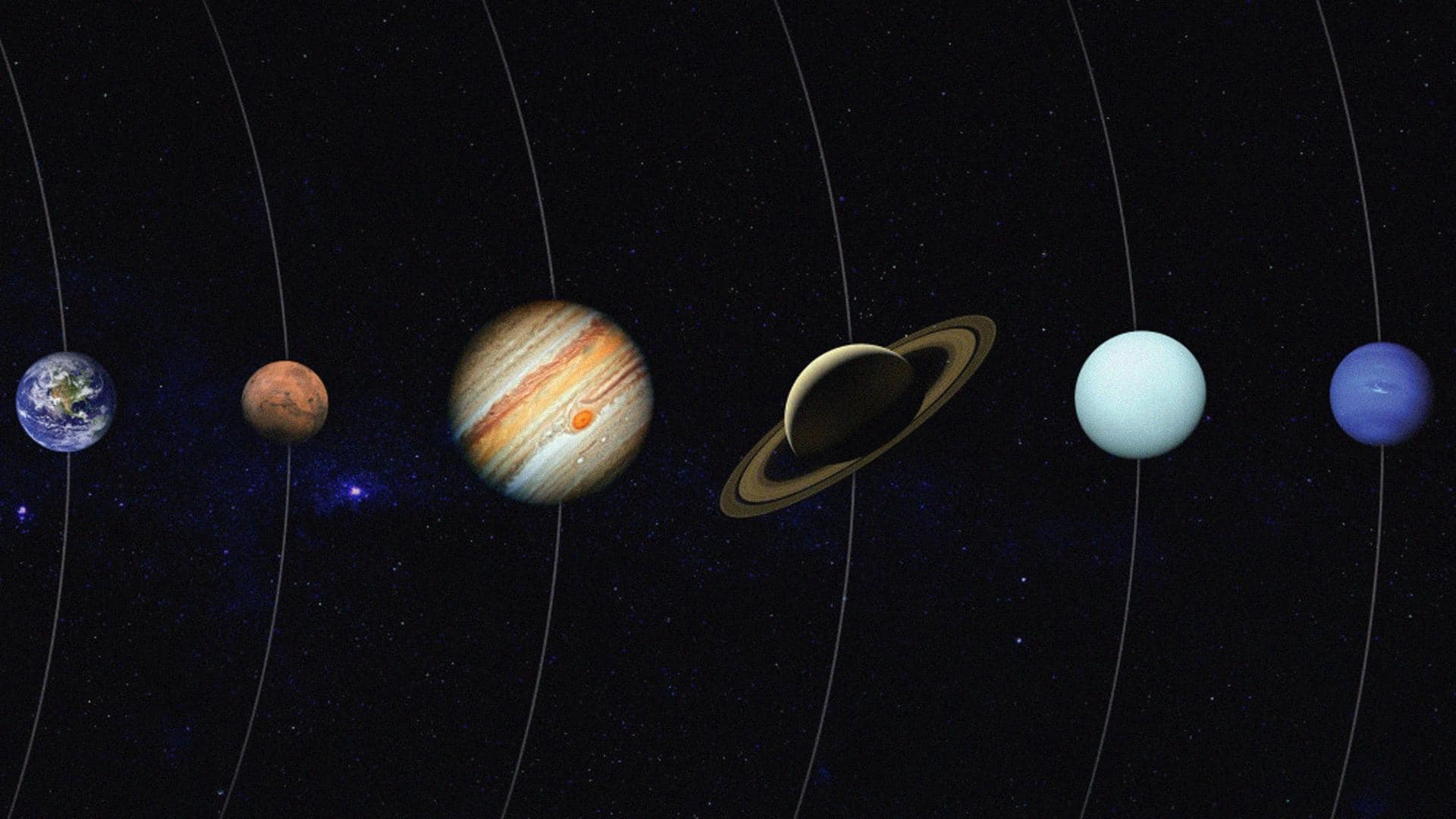
#RarePhenomenon: Mercury, Venus, Mars, Jupiter, Uranus to be visible tomorrow
What's the story
The heavens have been kind to us by showcasing some rare planetary conjunctions in the sky. After Venus came closer to the Moon and made a moon dot-like formation recently, four other planets are on their way (or should we say their orbits?) for a once-in-a-lifetime alignment with Earth's natural satellite. Well, it looks a lot like a season of marvelous celestial events!
Alignment
Mercury, Jupiter, Venus, Uranus, Mars to be visible together
In a rare celestial conjunction, five planets, including Mercury, Venus, Mars, Jupiter, and Uranus, will be visible in the night sky in India. Yes, even an outlying planet like Uranus can be seen with the naked eye joining this stellar alignment. The Moon will join these heavenly bodies and may gradually distance from Venus after showcasing the world a never-seen-before planetary positioning.
Date
Book your calendar: They will be clearest on March 28
While all these five planets will continue to be seen throughout the last days of the ongoing month, they will be best visible on Tuesday (March 28). Just when the Sun goes down, these planets will come together in a once-in-a-blue-moon alignment with each other. However, experts say that they may not form a straight line, so keep an eye out.
Time
You can see rare arrangement from 7:30 pm onward
All five planets will be lined up with the Moon after sunset, approximately 7:30 pm onward on Tuesday. The alignment will begin with Jupiter on the horizon, followed by Venus, Uranus, Moon, and Mars upward. Also, take note that Jupiter and Mercury may vanish 30 minutes post-sunset, so don't be late in viewing (and capturing) the rare five-planet conjunction.
Other planets
Saturn shall be seen today
Although nearer to Earth than Uranus in the solar system, Saturn may make a no-show in this unique arrangement. However, experts reveal it could be seen on Monday (March 27) at noon or sometime later. Unfortunately, you may not be able to see it with your naked eyes and may require a pair of binoculars or a telescope to spot it in the sky.
Brightness
Jupiter, Venus, Mars to shine; Mercury, Uranus to be dim
Owing to their geographical proximity to our planet and the Moon, Venus, Mars, and Jupiter will be the clearest in the sky and easy to spot. Mars will be showcasing a reddish glow near the Moon, while Venus will shine bright. Mercury and Uranus may be dim, with the latter exuding a greenish glow above Venus. Grab your binoculars for these two.
Phenomena
Does that mean all these planets are actually near Earth?
Despite being visible in the night sky, these five planets are not coming close to Earth in reality. This kind of rare planetary placement happens when their orbits line up together on one side of the Sun, making it look as though they are approaching closer. A similar phenomenon happened in June last year when Mercury, Venus, Mars, Jupiter, and Saturn aligned together.